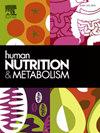Associations between exposure to volatile organic compounds with obesity in adults
IF 1.8
Q3 ENDOCRINOLOGY & METABOLISM
引用次数: 0
Abstract
Objective
This study was to investigate the correlation between urine volatile organic compound (VOC) metabolites and obesity-related outcomes, including BMI, waist circumference, obesity, and abdominal obesity.
Methods
Data from the National Health and Nutrition Examination Survey (NHANES) conducted between 2011 and 2016 were utilized for this analysis. Linear regression and logistic regression models were employed to estimate β-coefficients or odds ratios (ORs) along with their corresponding 95 % confidence intervals (CIs). Quantile g-computation (Qgcomp) regression, a method designed to evaluate the combined effects of multiple correlated chemical exposures, was used to assess the mixed influence of VOC metabolites on obesity-related outcomes.
Results
A total of 4950 adults were included in this analysis. The median age of the participants was 47 (33, 60) years, with 49.3 % being male. The median BMI was 27.7 (24.2, 32.4) kg/m2, and the median waist circumference was 98.0 (87.3, 109.0) cm. The prevalence of obesity and abdominal obesity was 36.8 % and 56.5 %, respectively. After adjusting for all covariates, urine VOC metabolites (including AAMA, AMCC, BMA, CYMA, DHBMA, 3HPMA, 2HPMA, MA, 2MHA, 3MHA+4MHA, MHBMA3, PGA, and HPMMA) exhibited a negative association with obesity. With the exception of BMA and DHBMA, similar results were observed regarding the association between urine VOC metabolites and the prevalence of abdominal obesity. Additionally, Qgcomp regression analysis revealed a significant negative correlation between the mixture of urine VOC metabolites and all obesity-related outcomes, with 2HPMA demonstrating the strongest influence on this negative association.
Conclusion
Our findings suggest a negative relationship between exposure to VOCs, as measured by urine VOC metabolite levels, and obesity in adults.
接触挥发性有机化合物与成人肥胖之间的关系
目的探讨尿挥发性有机化合物(VOC)代谢物与肥胖相关结局(包括BMI、腰围、肥胖和腹部肥胖)的相关性。方法采用2011 - 2016年全国健康与营养调查(NHANES)数据进行分析。采用线性回归和逻辑回归模型估计β系数或比值比(ORs)及其相应的95%置信区间(ci)。分位数g计算(Qgcomp)回归是一种旨在评估多种相关化学物质暴露的综合效应的方法,用于评估VOC代谢物对肥胖相关结果的混合影响。结果共纳入4950名成人。参与者的中位年龄为47岁(33,60)岁,其中49.3%为男性。中位BMI为27.7 (24.2,32.4)kg/m2,中位腰围为98.0 (87.3,109.0)cm。肥胖和腹部肥胖的患病率分别为36.8%和56.5%。在调整所有协变量后,尿VOC代谢物(包括AAMA、AMCC、BMA、CYMA、DHBMA、3HPMA、2HPMA、MA、2MHA、3MHA+4MHA、MHBMA3、PGA和HPMMA)与肥胖呈负相关。除了BMA和DHBMA外,关于尿液VOC代谢物与腹部肥胖患病率之间的关系也观察到类似的结果。此外,Qgcomp回归分析显示,尿液VOC代谢物的混合物与所有肥胖相关的结果之间存在显著的负相关,其中2HPMA对这种负相关的影响最大。结论:我们的研究结果表明,暴露于挥发性有机化合物(通过尿液挥发性有机化合物代谢物水平测量)与成人肥胖之间存在负相关关系。
本文章由计算机程序翻译,如有差异,请以英文原文为准。
求助全文
约1分钟内获得全文
求助全文
来源期刊

Human Nutrition and Metabolism
Agricultural and Biological Sciences-Food Science
CiteScore
1.50
自引率
0.00%
发文量
30
审稿时长
188 days
 求助内容:
求助内容: 应助结果提醒方式:
应助结果提醒方式:


